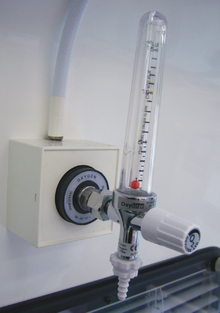DFliyerz
Hazard to Others
  
Posts: 241
Registered: 22-12-2014
Member Is Offline
Mood: No Mood
|
|
Tube Furnace Reactions
I recently acquired a tube furnace from someone here as well as 8' of quartz tubing from eBay. I was wondering, what are some interesting or useful
reactions that can be done with a tube furnace?
|
|
|
bob800
Hazard to Others
  
Posts: 240
Registered: 28-7-2010
Member Is Offline
Mood: No Mood
|
|
Check out https://www.sciencemadness.org/whisper/viewthread.php?tid=10564 and https://www.sciencemadness.org/whisper/viewthread.php?tid=20124&goto=search&pid=248831
|
|
|
JJay
International Hazard
    
Posts: 3440
Registered: 15-10-2015
Member Is Offline
|
|
You can make aluminum chloride and metal hydrides in a tube furnace. They can be used for making ketones from carboxylic acids in a gas phase (see
Vogel's ochem book for details).
|
|
|
DFliyerz
Hazard to Others
  
Posts: 241
Registered: 22-12-2014
Member Is Offline
Mood: No Mood
|
|
Additionally, for reactions between two gasses, how do you keep the flow rates to the correct proportions if you're generating the gases on-site?
|
|
|
JJay
International Hazard
    
Posts: 3440
Registered: 15-10-2015
Member Is Offline
|
|
That can be tricky... if the materials start as solids or liquids, you can prepare a solution of them in the correct ratios and vaporize it. Dealing
with gases... you'd probably use a flow control valve or a venturi with metering... it could be very hard in an amateur setup.
[Edited on 14-5-2016 by JJay]
|
|
|
blogfast25
International Hazard
    
Posts: 10562
Registered: 3-2-2008
Location: Neverland
Member Is Offline
Mood: No Mood
|
|
Quote: Originally posted by DFliyerz  | | Additionally, for reactions between two gasses, how do you keep the flow rates to the correct proportions if you're generating the gases on-site?
|
That's virtually impossible.
But for most cases it isn't even desirable.
If you take a simple reaction:
A(g) + B(g) === > whatever
Then having either A or B in stoichiometric excess is usually good practice. In the next stage you'll separate the reaction product from any unreacted
A or B.
|
|
|
JJay
International Hazard
    
Posts: 3440
Registered: 15-10-2015
Member Is Offline
|
|
Note that if you're vaporizing a solution of two reactants to produce gases in a particular ratio, you probably can't just boil the solution and hope
for the best - you want to vaporize droplets or perhaps a slow trickle of reactants.
|
|
|
careysub
International Hazard
    
Posts: 1339
Registered: 4-8-2014
Location: Coastal Sage Scrub Biome
Member Is Offline
Mood: Lowest quantum state
|
|
As blogfast observes, usually stoichometric mixtures aren't necessary or desirable for gas-phase reactions.
However, lets suppose that there is a case where it is. Since the reaction takes place at high temperatures I think we can assume the mixture is
non-reactive at room temperature. In that case you could fill a pressure tank up some pressure with gas A, then add gas B to a calculated second
pressure to get the correct mixture. Then you just open the valve to the tube furnace to feed in the correct reaction mixture.
|
|
|
Magpie
lab constructor
    
Posts: 5939
Registered: 1-11-2003
Location: USA
Member Is Offline
Mood: Chemistry: the subtle science.
|
|
Feeding a gas at a known flowrate from a pressurized source can be done with a rotameter:

The single most important condition for a successful synthesis is good mixing - Nicodem
|
|
|
JJay
International Hazard
    
Posts: 3440
Registered: 15-10-2015
Member Is Offline
|
|
Quote: Originally posted by careysub  | As blogfast observes, usually stoichometric mixtures aren't necessary or desirable for gas-phase reactions.
However, lets suppose that there is a case where it is. Since the reaction takes place at high temperatures I think we can assume the mixture is
non-reactive at room temperature. In that case you could fill a pressure tank up some pressure with gas A, then add gas B to a calculated second
pressure to get the correct mixture. Then you just open the valve to the tube furnace to feed in the correct reaction mixture. |
According to Ramsay's A System of Inorganic Chemistry, stoichiometric amounts of hydrogen and chlorine are desirable when producing hydrogen
chloride by direct union of the elements. It's hard to imagine why anyone would want to do that... but I think it might be better to mix the gases at
the tube entrance to deal with differing effusion rates. You could probably estimate the correct pressures to use with Graham's Law of Effusion, but
the tank would only emit the correct reaction mixture for an instant.
[Edited on 14-5-2016 by JJay]
|
|
|